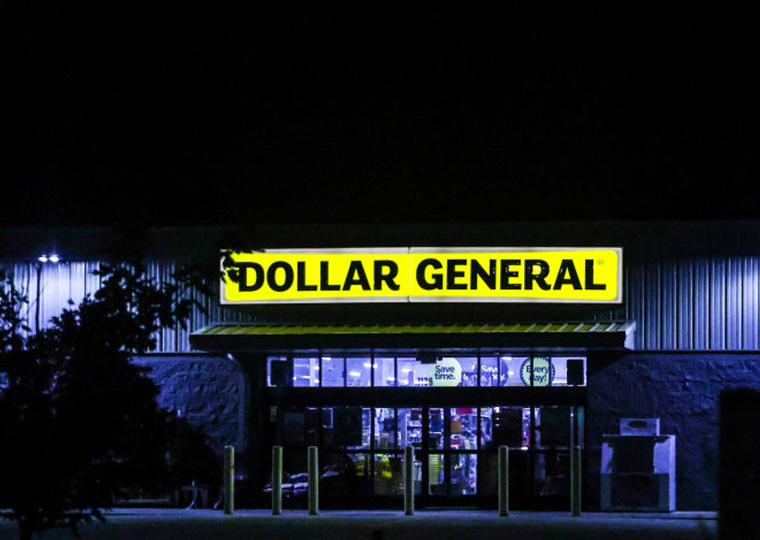Lots of web searches for laminate flooring? Move it closer to the storefront
Classic brick-and-mortar retailers that also offer an online shopping platform understand their “omnichannel” approach isn’t solely about offering parallel options to satisfy varied consumer preferences. There is an important interconnectedness known as webrooming, the industry’s name for a common dynamic in which shoppers start with online research and then head to the store to make a purchase.
Once at the store, there’s a good chance shoppers encounter a layout optimized for a long trek of temptation. Past research has established that impulse buys — common for some types of shopping, such as groceries — can be nudged higher when we are required to schlep to the back of the store. We stop at the market for milk and eggs, found on the back wall, and also walk out with a bottle of olive oil marked down 10% that was in the aisle we traipsed down. Or we leave the drugstore with our prescription and the pricey face cream we noticed while working our way to the pharmacy tucked as far from the front door as possible.
But research published in Manufacturing & Service Operations Management finds the long-walk strategy may be suboptimal for a subset of omnichannel retailers.
UCLA Anderson’s Felipe Caro, IESE Business School’s Victor Martínez-de-Albéniz and University of Pennsylvania’s Borja Apaolaza suggest that, for less frequent shopping focused on a specific project need, using data from the retailer’s online search activity to tactically move popular online items to prime locations, such as closer to the front door, can boost in-store sales.
The Mission-Driven Shopper
The authors built a model that leveraged data from a Chilean home improvement chain with 60 stores that optimized store footprints to make popular online products a faster grab at the stores; they estimate a resulting average in-store revenue bump of 2% to 5%.
The researchers theorized that people who venture into home improvement stores — or an electronics or auto-parts store, for example — are more mission-driven than, say, a grocery shopper. Chances are you don’t go to a home improvement store a few times a week; when you do venture to one, it’s for a specific item for a specific project. That alone makes a long in-store schlep annoying, but it also seems to reduce the likelihood of impulse buying. If you researched laminate flooring online, once you’re in the store, chances are you’re not going to load up on paint and drill bits you walked past on the way to the flooring section.
That theory played out in the researchers’ seven-month data dive into the online traffic and in-store sales for the chain. By tracking sales in categories located near items that were popular in online searches (or along the path to those popular online items) the researchers found muted impulse buying relative to what past research has documented in supermarket studies.
The researchers build on that insight by suggesting omnichannel retailers might want to pay less attention to the impulse-buy layout and consider using web search data to shorten the walk for popular items.
A Shelf Too Far
The authors introduce a metric they call “webrooming conversion.” Instead of the usual approach of dividing sales by the number of people who happened to walk through a store, their measure looks at how many sales occurred in a category compared with how many local online shoppers had recently searched for that category. It’s not tracking individuals, but it uses local online search activity as a proxy for customer interest — which is a more targeted approach to capturing shopper interest/intent more accurately than store foot traffic.
From December 2018 through June 2019 the researchers collected data from the Chilean chain, where in-store purchases accounted for more than 90% of overall revenue. Using geolocation technology, they linked online searches in specific areas to sales at nearby stores. That gave them a baseline understanding of what people wanted (online searches) and what actually sold in the store.
Caro, Martínez-de-Albéniz and Apaolaza had access to the actual layouts of 16 stores. That enabled them to model the potential upside of moving categories that were popular in online searches — but inconveniently located in-store — closer to hot spots in the store. Using statistical methods that isolate whether there is causation, rather than just correlation, the model landed on the average in-store revenue increase of 2% to 5% from tactical relocation of products popular in online search.
Moving Product by Literally Moving the Product
The researchers offer one store’s experience with laminate flooring as an example. Laminate flooring was just a so-so seller in a store where it was located more than 104 meters from the front door — farther than the average of 98 meters for all products in that store. Yet laminate flooring was showing strong interest in local online searches. Their model suggested that relocating the in-store display of laminate flooring to less than 50 meters from the front door — taking the place of poorly selling smart-home connectivity devices — could boost sales in that category by 178%.
The researchers acknowledge this is an extreme example. But it highlights their assertion that the long-trek model of store layout seems to hold back, rather than help sales, when it makes it harder for mission-driven shoppers to find items generating plenty of online interest.
The researchers’ case for treating project-specific infrequent shopping jaunts differently than more frequent shopping forays — where impulse buying has been shown to drive revenue — suggests a potential refinement of retail strategy.
For retailers such as home improvement, electronics and auto parts, where shoppers arrive with a clear mission, this research offers a potential leveraging of website data to drive higher in-store revenue.
The researchers explicitly warn against applying this approach to grocery stores, fashion retailers or anywhere impulse purchases drive significant revenue. In those settings, the long walk past tempting products remains the better strategy.
But project-focused shoppers who can get in and out of the store faster are likely to become happier repeat customers.
Featured Faculty
-
Felipe Caro
Professor of Decisions, Operations and Technology Management
About the Research
Caro, F., Martínez-de-Albéniz, V., & Apaolaza, B. (2025). The Value of Online Interactions for Store Execution. Manufacturing & Service Operations Management.






